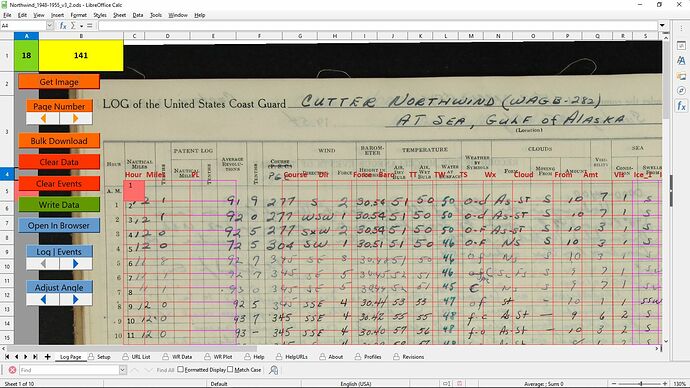When we import an image into Calc, we often have to rotate the image slightly in order for the grid in the image to align with the grid in Calc. However, each time we enter data in a cell there is a noticeable delay between the time we press the Enter or Tab key and the time that the entry is finalized, for lack of a better word, and the next cell becomes active. This is a problem for fast typists and for some of our macros that are triggered by sheet events. This delay happens only if the images are rotated at a an angle, and not if the images are not rotated. It seems that if the angle is non-zero that the images are being rotated and re-drawn, but this does not seem to reasonable. A bug, perhaps? Our images are large, often 5 meg or larger. One of our transcribers noted:
A few months ago I ran tests on the Windows PC watching the system monitor with and without rotation. When the image was rotated there was a burst of memory activity. Without rotation, things were stable. That’s when I realized that they must be rotating the image every time we write when the image is rotated since rotating the image would require a significantly greater work space. I have no direct evidence that they are rotating the image every time, but I can’t come up with any other explanation based on what we’ve observed.

